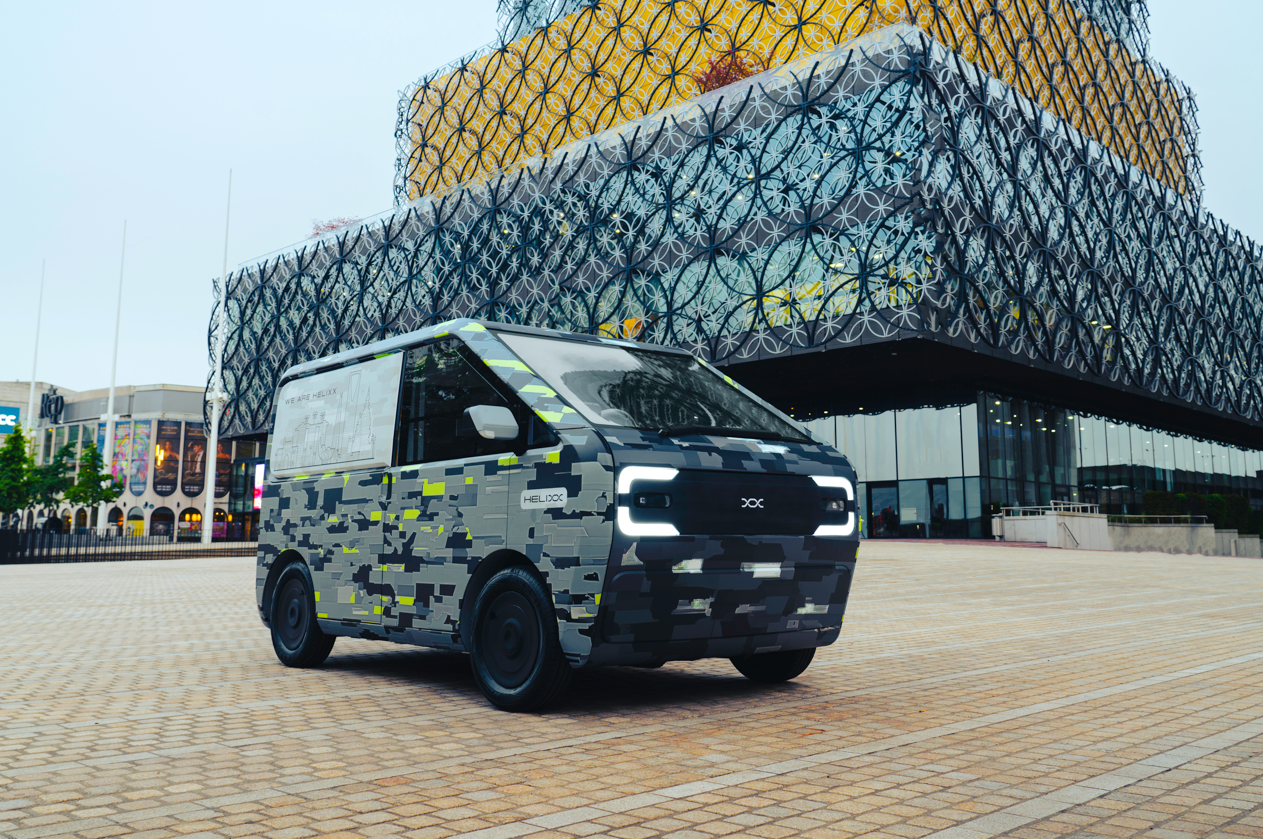
New Delhi: Helixx, a UK-based global technology company, has revealed a first demonstrator vehicle, providing insight into the company’s design principles and efficacy of the Helixx manufacturing system.
The demonstrator vehicle previews the Helixx commercial delivery van. Featuring a confident, contemporary cube-like aesthetic, the Helixx delivery van is designed for ease of assembly and optimum interior load space, taking into account the needs of both manufacturers and fleet operators in one mission-specific mobility solution. When it enters production in 2024, it will be accompanied by a pick-up truck for the construction industry, an open-body and a closed-body passenger vehicles for ride-hailing fleets.
To minimise complexity, the body system has been designed around a specific set of rules to enable replication in Helixx mobility hubs whilst being flexible enough to support white-label customer designs and localised branding. The body system comprises only five key structural components.. All five components ‘click and bond’ together for effortless assembly, significantly reducing manufacturing costs and resulting in a robust and highly durable vehicle.
Steve Pegg, Helixx CEO and co-founder, said, “As engineers and designers, we were determined to never lose sight of how and where Helixx vehicles will be produced. We deprogrammed our mindset away from conventional design principles to challenge the complexities of legacy manufacturing systems. We developed this demonstration vehicle to prove and stress-test the global replicability of our digital-first approach. The vehicle visually represents what licensed Helixx Mobility Hubs can produce in as little as 180 days from initial site survey to vehicles rolling out onto the street, offering subscribers access from USD 0.25 per hour. Our demonstration vehicle will now enable us to amplify our customer engagement and gain valuable feedback from the market.”
During the vehicle’s development, the Helixx team, which brings diverse expertise spanning conceptual vehicle design engineering, manufacturing, and supply chain from global automotive OEMs, utilised in-house 3-D printing to create all of the structural and cosmetic body components from scratch. Each piece was captured digitally to provide the basis of an industry-first wide-scale internally recyclable polymer moulding body system. This removes the requirement for energy demanding and chemically dependent sheet metal processes entirely, simplifying the manufacturing process by up to 50%.
The finalised body system was assembled achieving a first-time-fit during the bonding process, demonstrating that welding stamped body panels is not required within the Helixx vehicle manufacturing platform. The end result is a decomplexified body system with 30% less mass and hundreds of fewer individual components than traditional vehicles, in line with Helixx goal of defining an entirely new vehicle category.
Based on a hybrid aluminium chassis, the Helixx commercial delivery van provides a 2100-litre capacity and a 500-kg maximum payload. It features a 110cm rear door width and 140cm load bay length, enabling it to accommodate the majority of global shipping pallets. The body is 3.2 meters long and 1.5 meters wide. A unique feature is the central driving position, with a single seat that not only optimises load space but also ensures compatibility with both left- and right-hand-drive markets.
Helixx’s proprietary manufacturing technology stack includes software enabled by the industry-leading Siemens Xcelerator portfolio. It has been designed from first-principles to decomplexify the production of commercial electric vehicles, with the goal of drastically reducing the barriers to entry to make them commercially viable across the globe. The Helixx software provides licensees with all information, supply chain, and instructions needed to build their own Helixx vehicles efficiently without the constraints of legacy vehicle manufacturing.
Following validation and in-market feedback on the Demonstrator Vehicle Helixx is well placed within a roadmap to commence a Gen Zero production run of 100 vehicles at its pilot hub in the UK, before customer vehicle and factory rollout commences at a concept hub in Southeast Asia.









